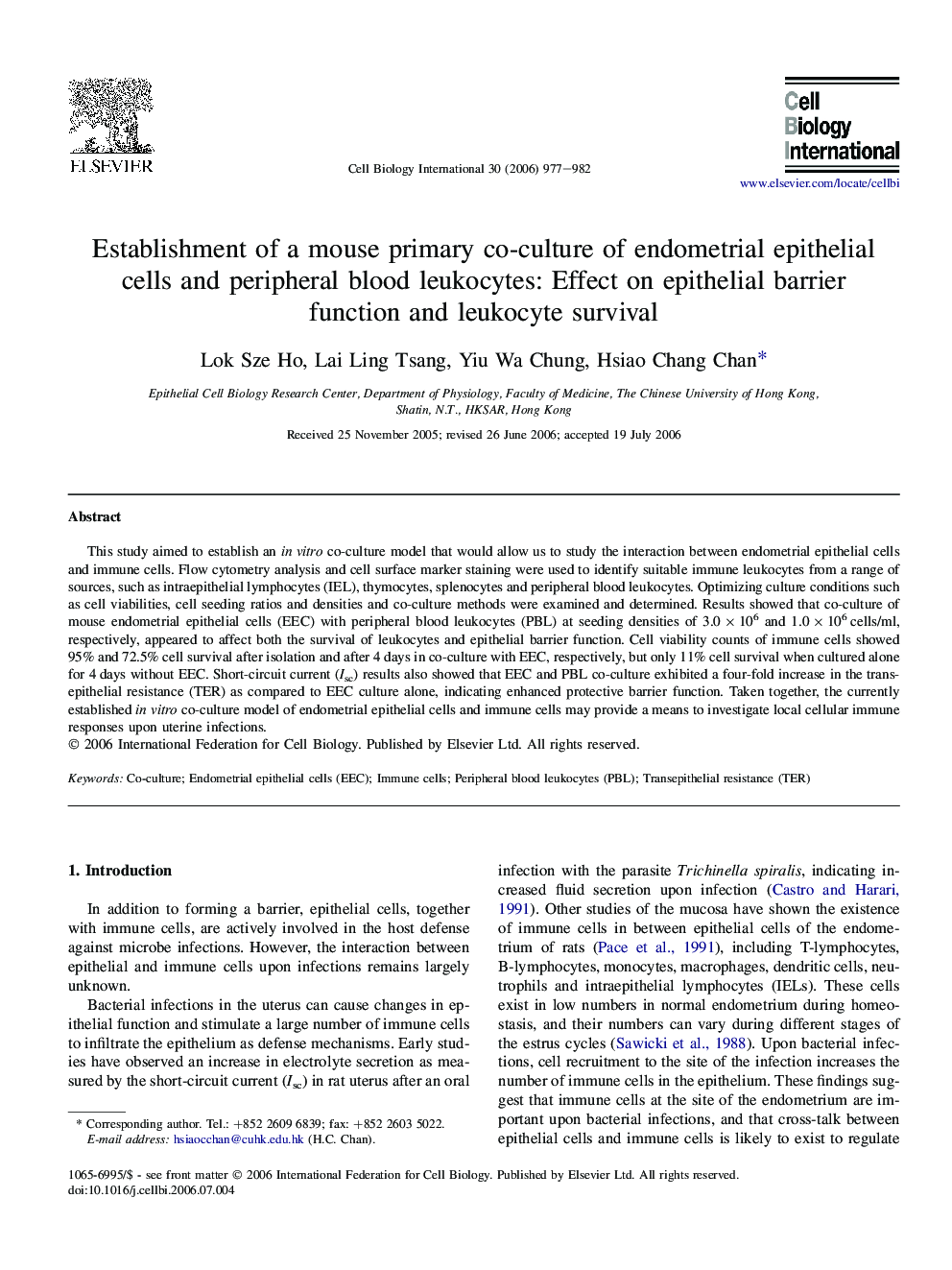| Article ID | Journal | Published Year | Pages | File Type |
|---|---|---|---|---|
| 2067653 | Cell Biology International | 2006 | 6 Pages |
Abstract
This study aimed to establish an in vitro co-culture model that would allow us to study the interaction between endometrial epithelial cells and immune cells. Flow cytometry analysis and cell surface marker staining were used to identify suitable immune leukocytes from a range of sources, such as intraepithelial lymphocytes (IEL), thymocytes, splenocytes and peripheral blood leukocytes. Optimizing culture conditions such as cell viabilities, cell seeding ratios and densities and co-culture methods were examined and determined. Results showed that co-culture of mouse endometrial epithelial cells (EEC) with peripheral blood leukocytes (PBL) at seeding densities of 3.0Â ÃÂ 106 and 1.0Â ÃÂ 106Â cells/ml, respectively, appeared to affect both the survival of leukocytes and epithelial barrier function. Cell viability counts of immune cells showed 95% and 72.5% cell survival after isolation and after 4Â days in co-culture with EEC, respectively, but only 11% cell survival when cultured alone for 4Â days without EEC. Short-circuit current (Isc) results also showed that EEC and PBL co-culture exhibited a four-fold increase in the transepithelial resistance (TER) as compared to EEC culture alone, indicating enhanced protective barrier function. Taken together, the currently established in vitro co-culture model of endometrial epithelial cells and immune cells may provide a means to investigate local cellular immune responses upon uterine infections.
Related Topics
Life Sciences
Biochemistry, Genetics and Molecular Biology
Biophysics
Authors
Lok Sze Ho, Lai Ling Tsang, Yiu Wa Chung, Hsiao Chang Chan,
